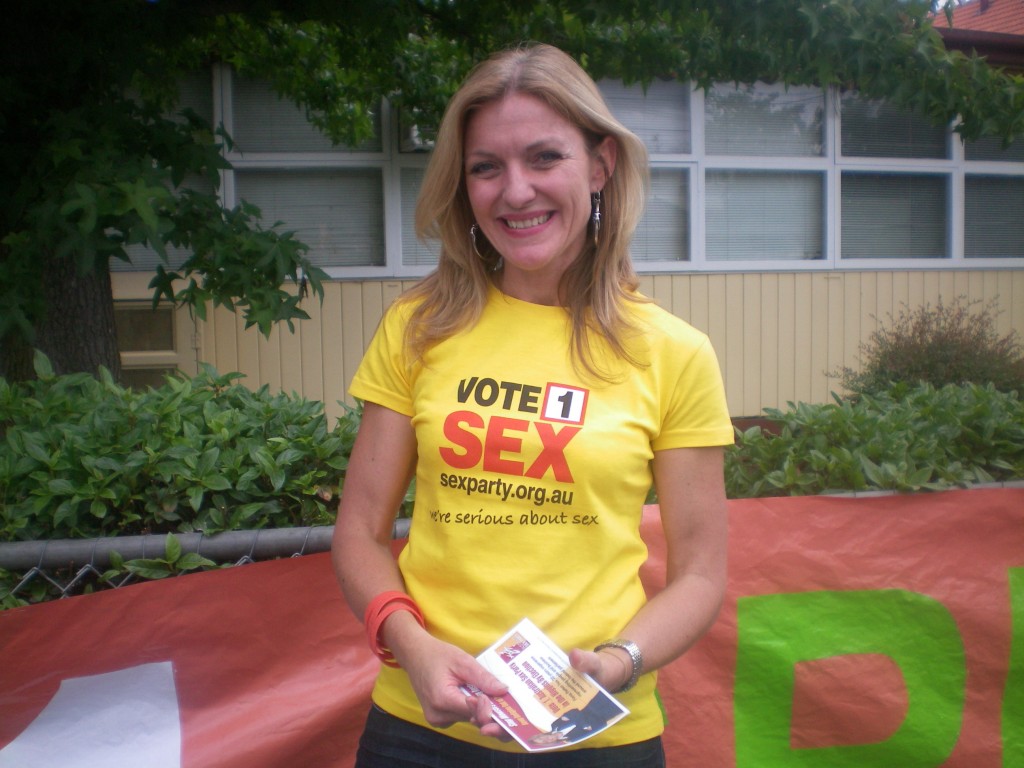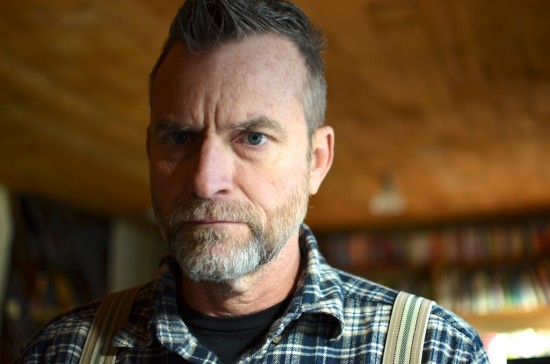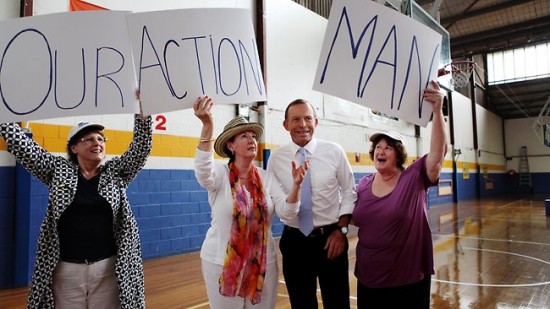
They seem so bright, youthful and groovy, with progressive policies like legalising same-sex marriage and marijuana, so it’s no wonder lots of people, especially gay men and lesbians, have decided to give the Australian Sex Party their vote this year. But if you’re one of those who did, you might be a bit surprised to know where your vote ended up.
In three states, above-the-line votes from the Sex Party were instrumental in getting candidates from right-wing microparties elected: the Australian Motoring Enthusiast Party in Victoria, the Liberal Democratic Party in NSW, and the Australian Sports Party in WA were the ultimate recipients of the Sex Party’s votes in those states.
Elsewhere, votes for the Sex Party ultimately ended up with the Liberal Party (in Tasmania), the ALP (in NT), Nick Xenophon (in SA) and the Greens (in SA, Queensland and the ACT). Sex Party votes did help reelect SA Greens Senator Sarah Hanson Young.
Many of the people I have met who supported the Sex Party would consider themselves vaguely left-wing, progressive voters. Most of those would be surprised to discover where their Senate vote ended up.
The full details of how Sex Party Senate votes were distributed in each state are below (these numbers are progressive, as the count is still proceeding, and only include above-the-line votes).
I doubt many of those who voted for the Sex Party would be happy to know their vote ended up electing a gun nut (in NSW), a car nut (in Vic) or sports nut (nobody seems to know what the Australian Sports Party’s policies are, except they seem to like sport) in WA. The fact that they did shows the urgent need for reform of the above-the-line voting system in the Senate.
(States are listed below in order of the size of the Sex Party vote)
Victoria
There were 43,744 votes for the Sex Party in Victoria. Every one of those votes went to their 42nd preference, the Australian Motoring Enthusiast Party, enough to get Ricky Muir elected to the Senate for the next six years.
NSW
There were 32,599 votes for the Sex Party in NSW. All but 118 of those votes went to their 18th preference, the gun-toting Liberal Democrats, pushing David Leyonhjelm over the line and into the upper house until at least mid-2020. The remaining 188 votes went to the Shooters and Fishers Party, via preference 48.
Queensland
There were 20,592 votes for the Sex Party in the Sunshine State. These were distributed first to the HEMP Party via preference 5, and then to the Greens via preference 42.
Western Australia
There were 12,376 votes for the Sex Party in WA. Of those 12,338 went to their 11th preference, the Australian Sports Party, pushing Wayne Dropulich across the line and onto the comfy red leather benches for the next six years. The remaining 38 votes went to the Greens.
South Australia
There were 7610 votes for the Sex Party in SA. These were initially distributed to the No Carbon Tax Climate Sceptics (preference 11), then to the Greens (preference 41), where they helped reelect Sarah Hanson-Young, before coming to rest with Nick Xenophon (preference 45).
ACT
There were 5966 votes for the Sex Party in the traditionally porno-loving national capital. These were distributed first to the Bullet Train For Australia Party (preference 9) and then to Simon Sheikh of the Greens (preference 15).
Tasmania
There were 4112 votes for the Sex Party. These went to the Liberal Democratic Party (preference 21) and then on to the Liberal Party (preference 34).
NT
There were 1410 votes for the Sex Party in the Territory. These went briefly to the Shooters and Fishers (preference 3) before helping elect Nova Peris for the ALP (preference 12).
Source: ABC elections website, accessed 9 September 2013.
Image: Fiona Patten (CC-licensed image from Wikimedia Commons)



